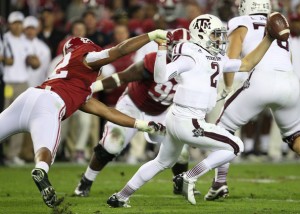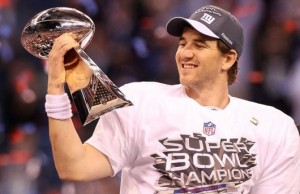Jason Lisk highlighted what was likely in Smith’s head: we don’t know who is going to kick the next field goal. Sure, if it’s the Falcons, then you want to go for two, but if it would be New Orleans (the team about to gain possession) then we’re in a 7-point game situation, so the extra point is the conservative right play.
But here’s the easy shorthand: if the downside to missing the two-point conversion is limited to you needing a two-point conversion later to even things up, then going for it is usually the correct call.
What is the advantage to being down 3 vs. being down 4? Well a field goal ties the game, and even if the opponent kicks a field goal, a touchdown will win it for you.
What is the disadvantage to being down 5 vs. being down 4? Well, a field goal is meaningless in either case (or, if it’s not meaningless, one field goal still leaves you one field goal away from taking the lead). The big disadvantage is that if New Orleans scores, the Falcons would have been down 8 as opposed to being down 7. But in coach-speak, being down 8 is one-possession game just like being down 7 is! That’s obviously not true, but in this case, the downside to going for 2 is essentially cut in half, because you get a second bite at the apple.
In other words, 50% of the time that you ‘go for two’ following a touchdown when trailing by 11, you will be down by 3 and glad you were aggressive; 25% of the time you go for 2 you will have some short-term discomfort, but this will be alleviated when you convert the next touchdown (which you need anyway if you don’t go for two). Only 25% of the time will this move blow up in your face. This is exactly the same logic that dictates that a team, down by 14, should go for two after scoring the first touchdown.
Considering Atlanta’s odds of converting the two-point attempt had to be greater than 50/50, considering that’s roughly the league average, Atlanta’s offense is great, and New Orleans’ defense is terrible, that makes going for two the obvious correct call.
Of course, Smith also made an ugly mistake when he kicked a field goal from the Saints’ two-yard-line when trailing by 4 points with nine minutes left. Had he gone for 2 earlier, I could at least understand the logic of kicking the field goal, even if I wouldn’t do it. But down by 4, he passed up a 50/50 chance to take a three-point lead to cut the lead to 1? Even if he missed, the Saints would have been backed up near the own goal, and a three-and-out would have likely put the Falcons a first down or two away from getting that precious field goal.







